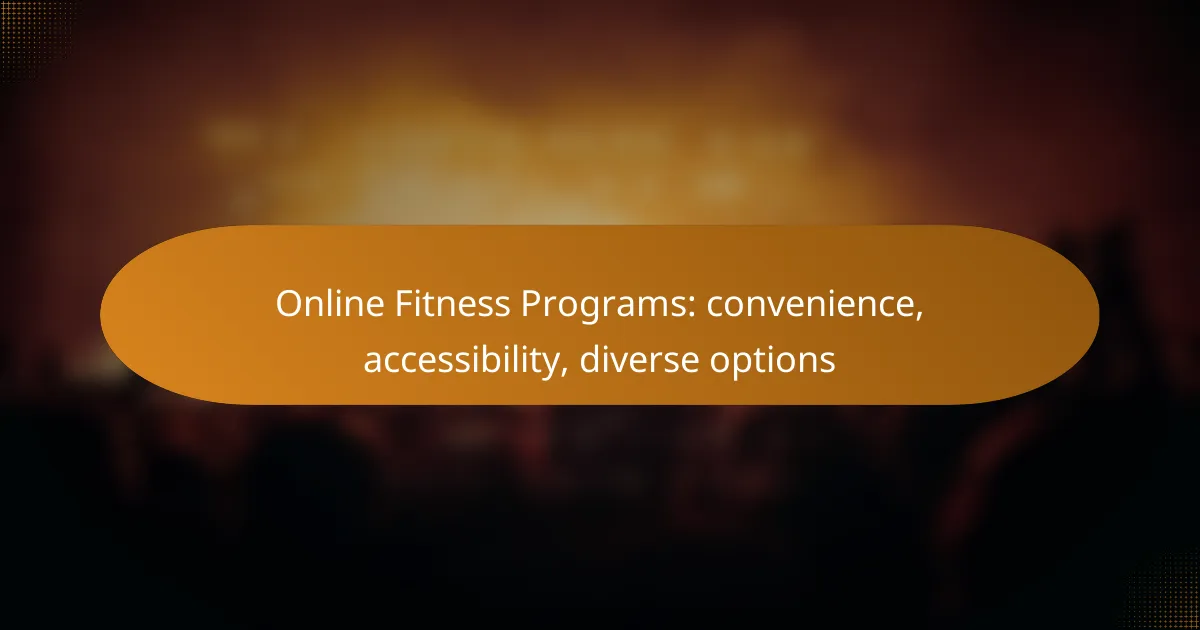Bodyweight training offers a versatile approach to fitness that can be adapted to various spaces, typically requiring a minimum area of about 10 square meters for basic exercises. It effectively supports a range of fitness goals, such as building strength, improving flexibility, and enhancing endurance, all without the need for specialized equipment. Progression in this training method involves gradually increasing exercise difficulty, allowing individuals to continuously improve and adapt to their fitness levels.

What space is required for bodyweight training?
Bodyweight training can be performed in a variety of spaces, but a minimum area of about 10 square meters is typically sufficient for basic exercises. More advanced routines may require additional space to accommodate movement and equipment.
Minimum space for basic exercises
For basic bodyweight exercises like push-ups, squats, and planks, a space of around 10 square meters is usually adequate. This allows enough room for movement without obstructions. Ensure the area is flat and free of hazards to prevent injuries.
Consider using a yoga mat or similar surface to provide comfort and stability during workouts. A small, clear area in your living room or bedroom can easily serve as your training zone.
Recommended space for advanced routines
Advanced bodyweight training, which may include dynamic movements like burpees or plyometric exercises, typically requires at least 15 to 20 square meters. This extra space helps facilitate larger movements and reduces the risk of collisions with furniture or walls.
If you’re incorporating additional equipment, such as resistance bands or a pull-up bar, ensure you have enough clearance above and around you. A garage or a spacious backyard can be ideal for these workouts.
Outdoor vs indoor space considerations
When choosing between outdoor and indoor spaces for bodyweight training, consider factors like weather, privacy, and available equipment. Outdoor spaces can provide fresh air and a change of scenery, but they may be subject to weather conditions.
Indoors, you have more control over the environment, but space may be limited. If training outdoors, look for flat, safe areas like parks or backyards. Indoors, ensure the space is well-ventilated and free from clutter.
Essential equipment for limited space
In limited spaces, focus on versatile equipment that enhances your bodyweight training without requiring much room. Items like resistance bands, a jump rope, or a small stability ball can add variety to your workouts.
Additionally, consider investing in a foldable mat for comfort and safety. Keep your equipment organized and easily accessible to maximize your training efficiency in a compact area.

What fitness goals can be achieved with bodyweight training?
Bodyweight training can effectively help individuals achieve various fitness goals, including building strength, improving flexibility, and enhancing endurance. These goals can be pursued without the need for specialized equipment, making bodyweight exercises accessible to many.
Building strength with bodyweight exercises
Bodyweight exercises like push-ups, squats, and pull-ups are excellent for developing strength. They utilize your own body weight as resistance, allowing for progressive overload by adjusting the difficulty or increasing repetitions. For example, progressing from knee push-ups to standard push-ups can significantly enhance upper body strength.
To maximize strength gains, focus on form and control during each movement. Incorporating variations, such as one-legged squats or explosive push-ups, can further challenge your muscles and promote growth. Aim for 3-5 sets of 8-15 repetitions for optimal results.
Improving flexibility through bodyweight routines
Bodyweight training can enhance flexibility by incorporating dynamic and static stretches into your routine. Exercises like lunges, yoga poses, and deep squats can improve range of motion and reduce injury risk. Regular practice can lead to noticeable improvements in flexibility over time.
To effectively increase flexibility, dedicate specific sessions to stretching or include flexibility-focused movements in your warm-up and cool-down. Hold stretches for 15-30 seconds and repeat 2-3 times for each muscle group to achieve better results.
Enhancing endurance with bodyweight training
Bodyweight training can also boost cardiovascular endurance through high-intensity interval training (HIIT) or circuit training. Combining exercises like burpees, mountain climbers, and jumping jacks in a fast-paced format can elevate your heart rate and improve stamina. Aim for sessions lasting 20-30 minutes, incorporating short rest periods.
To enhance endurance effectively, focus on maintaining a steady pace and gradually increasing the duration or intensity of your workouts. Incorporating longer sets or reducing rest times can further challenge your cardiovascular system and promote endurance gains.

How to progress in bodyweight training?
Progressing in bodyweight training involves gradually increasing the difficulty of exercises to enhance strength, endurance, and overall fitness. This can be achieved through various techniques tailored to your current fitness level, ensuring continuous improvement and adaptation.
Progression techniques for beginners
Beginners can start by mastering basic movements such as push-ups, squats, and planks. Focus on form and technique before increasing repetitions or duration. Once comfortable, incorporate variations like incline push-ups or assisted squats to add challenge.
A common approach is to follow the principle of progressive overload, which can be as simple as adding one or two more repetitions each week. Tracking your workouts can help maintain motivation and ensure steady progress.
Intermediate progression strategies
Intermediate trainees should aim to increase the complexity of exercises, such as transitioning from standard push-ups to decline push-ups or one-legged squats. Incorporating more dynamic movements like burpees or plyometric exercises can also enhance strength and agility.
Consider implementing circuit training, where you perform a series of exercises back-to-back with minimal rest. This not only builds strength but also improves cardiovascular fitness. Aim for 3-4 circuits with 8-12 repetitions per exercise.
Advanced bodyweight training methods
Advanced bodyweight training can include skills-based movements such as muscle-ups, handstand push-ups, or planches. These exercises require significant strength, balance, and coordination, making them suitable for those with a solid foundation.
Incorporating isometric holds, like the front lever or L-sit, can further challenge your muscles and improve stability. Set specific goals for each skill and practice consistently, allowing adequate recovery to prevent injury. Aim for 3-5 sets of holds lasting 10-30 seconds, depending on your ability.

What are the prerequisites for effective bodyweight training?
Effective bodyweight training requires a basic understanding of your current fitness level, clear goals, and the ability to progress over time. Establishing these prerequisites ensures that your training is both safe and effective, allowing for optimal results.
Assessing current fitness level
Before starting bodyweight training, evaluate your current fitness level to tailor your workouts appropriately. Consider factors such as your strength, endurance, flexibility, and any previous exercise experience. This self-assessment can help you identify which exercises are suitable for you and where to begin.
A simple way to assess your fitness is to perform a few basic movements, such as push-ups, squats, and planks, and note how many repetitions you can complete with proper form. This will give you a baseline to measure progress as you advance in your training.
Setting realistic bodyweight training goals
Setting realistic goals is crucial for maintaining motivation and tracking progress in bodyweight training. Goals should be specific, measurable, achievable, relevant, and time-bound (SMART). For instance, instead of aiming to “get stronger,” set a goal to perform 10 consecutive push-ups within a month.
Consider breaking larger goals into smaller milestones to make them more manageable. For example, if your ultimate goal is to master advanced movements like muscle-ups, start with foundational exercises such as pull-ups and dips, gradually increasing difficulty as you build strength and confidence.

How does bodyweight training compare to other fitness methods?
Bodyweight training primarily utilizes an individual’s own weight for resistance, making it a versatile and accessible fitness method. Compared to other techniques, it often requires minimal equipment and space, appealing to those with limited resources or specific fitness goals.
Bodyweight training vs weightlifting
Bodyweight training focuses on using your own mass for resistance, while weightlifting involves external weights like dumbbells or barbells. Both methods can build strength and muscle, but bodyweight exercises often emphasize functional movements and core stability.
Weightlifting typically allows for more precise control over resistance levels, which can be beneficial for progressive overload. However, bodyweight training can be easily modified to increase difficulty through variations like single-leg squats or explosive push-ups.
For those with limited access to a gym or equipment, bodyweight training is a practical alternative. It can be performed anywhere, making it ideal for home workouts or travel.
Bodyweight training vs resistance bands
Bodyweight training relies solely on your body for resistance, whereas resistance bands provide adjustable tension to enhance workouts. Both methods are effective for strength training, but they serve different purposes in a fitness routine.
Resistance bands can offer a wider range of resistance levels and are portable, making them a good complement to bodyweight exercises. They can also help target specific muscle groups more effectively, especially for rehabilitation or mobility work.
When incorporating both methods, consider using resistance bands for added resistance during bodyweight exercises, such as band-assisted pull-ups or push-ups. This combination can enhance strength gains and improve overall fitness.



